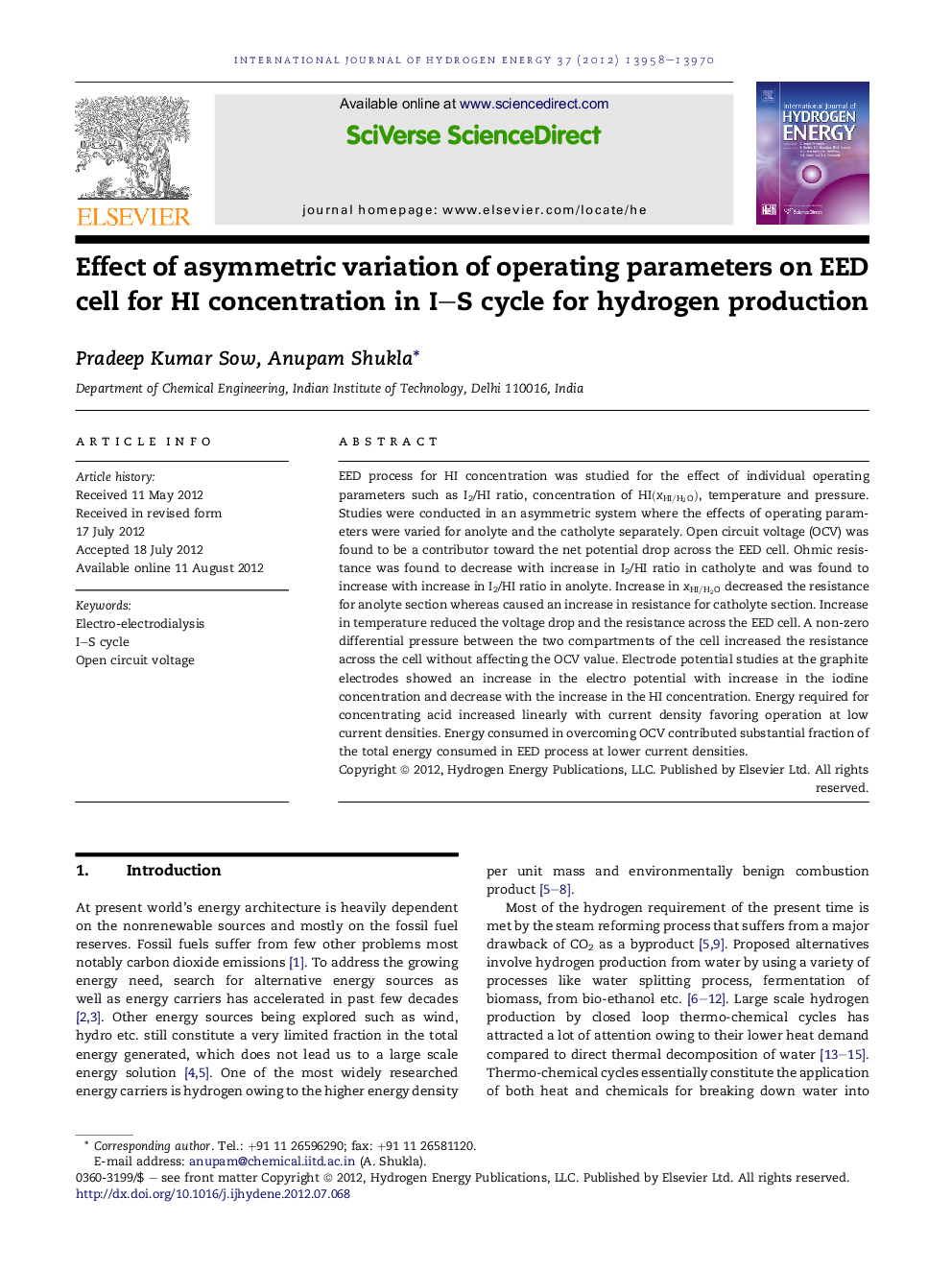| Article ID | Journal | Published Year | Pages | File Type |
|---|---|---|---|---|
| 1274738 | International Journal of Hydrogen Energy | 2012 | 13 Pages |
EED process for HI concentration was studied for the effect of individual operating parameters such as I2/HI ratio, concentration of HI(xHI/H2O)HI(xHI/H2O), temperature and pressure. Studies were conducted in an asymmetric system where the effects of operating parameters were varied for anolyte and the catholyte separately. Open circuit voltage (OCV) was found to be a contributor toward the net potential drop across the EED cell. Ohmic resistance was found to decrease with increase in I2/HI ratio in catholyte and was found to increase with increase in I2/HI ratio in anolyte. Increase in xHI/H2OxHI/H2O decreased the resistance for anolyte section whereas caused an increase in resistance for catholyte section. Increase in temperature reduced the voltage drop and the resistance across the EED cell. A non-zero differential pressure between the two compartments of the cell increased the resistance across the cell without affecting the OCV value. Electrode potential studies at the graphite electrodes showed an increase in the electro potential with increase in the iodine concentration and decrease with the increase in the HI concentration. Energy required for concentrating acid increased linearly with current density favoring operation at low current densities. Energy consumed in overcoming OCV contributed substantial fraction of the total energy consumed in EED process at lower current densities.
► Studies conducted on asymmetric concentrations in EED cell. ► Open circuit voltage was the major component of the total potential drop. ► Negligible net electrode over-potential. ► Increase in iodine leads to increase in the electrode potential. ► Decrease in HI leads to increase in the electrode potential.
